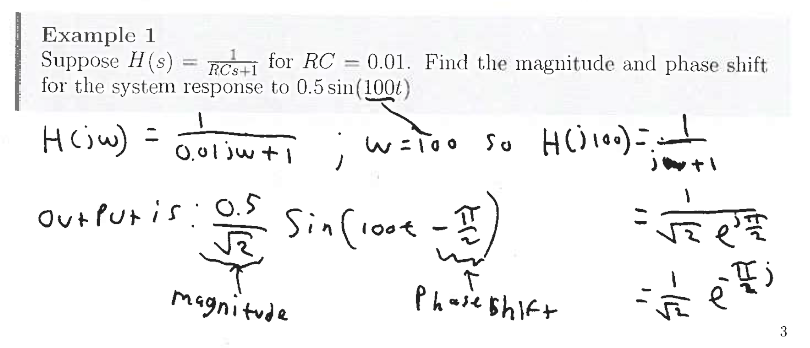Frequency Response
is called the frequency response, where is simply the Transfer Function.
This feels so random, where did
jwcome from?simply represents a complex number, which we can write . So here, we are only interested in the imaginary part.
Theorem 1
If is a LTI then for any
- Taken from LTI System page
Theorem 2
If is a LTI then
- is the magnitude
- is the phase
- See pretty sure this is like a complex exponential form?
Theorem 3
If is a stable LTI with transfer function , then as

Other
- The frequency response of a system is the Fourier transform of its Impulse Response
If you feed a sinusoid into an LTI system, the output is also a sinusoid of the same frequency. The system may:
- Change the amplitude of the sinusoid.
- Shift the phase (delay/advance in time).
SE380
The frequency response of a system is the complex-valued function . which could be equivalently expressed as the following two real-valued functions (magnitude and phase responses):
This function plays a fundamental role in the computation of the steady-state output response of a system to a sinusoidal input. Consider a system whose poles have negative real part. Given an input signal u(t) = U sin(ωt) and following the steps on Page 6 to compute the corresponding output response y(t), we get: